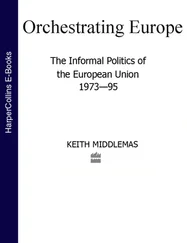The attic had a dark recess in which was the big bed, and the china knobs could be seen now and then when the door was open, and when [one day] I passed the door I was impressed to hear her talking to some invisible person, [whom I imagined to be] a sort of angel. This [in fact] was the servant next door. She was talking through the wall, as our own attic and the one next door had only a wall between them. This I did not know till later. When she came down in her afternoon frock from this room I almost expected her face to shine as Moses’ did when he came down from the mountains.
Stanley is transferring to the painting that sense of awe he felt on the day he heard the servant talking to her angel, to recreate the holy sense of awe which must have overcome the centurion and his servant on that day two thousand years ago when they knew the joy of salvation from death. He transfers the manner of its arriving to recreate through the medium of art his own joy at finding himself the recipient of a miracle too. He is himself the subject of the painting, as he describes:
The running attitude of the figure on the bed was arrived at through a consideration which did not materialize. I had originally thought of depicting the meeting of Christ and the centurion [as an exterior]. Then, when I was feeling there was too much out-of-doors element in the idea, I considered also including the scene in the servant’s bedroom showing his miraculous recovery. I thought I would like to have two pictures in one frame, with a frame between them as division. In the meeting picture, the centurion was to repeat something of the position of the servant lying on the bed which can, I think, be seen to be similar in position to a person walking, only it is lying down. As I lay on my bed one evening in our front bedroom, I realized that I was in such a comfortable position that I would love to take that ‘just-me-happy-on-the-front-room-bed’ and plant it, with all its fact elements retained, into the other picture. I tried this many times, but it did not come as I wanted and finally I painted the bedroom idea alone. I at this time liked to gaze round the Church when praying and feel the atmosphere I was praying in. In the picture I have remembered my own praying positions in the people praying round the bed, because I knew the state of mind I wanted in the picture was to be peaceful, as mine was in Church, even though the miracle had occurred.
How compressed are Stanley’s descriptions of his great paintings! The figure on the bed is ‘a person walking only it is lying down’. Visually it is the messenger running to meet Christ of the aborted exterior panel; but spiritually it is the distress of Stanley’s dilemma transferred en bloc into the bedroom scene. Yet, conversely, the ‘state of mind’ he wanted to express in the painting was to be ‘peaceful’, so that ‘the miracle had occurred’; so ‘peace’ is invoked from the terror through his recollected feelings of lying comfortably in bed ‘in our front bedroom’, but even more from the sensations which overcame him when he gazed around during prayer in Cookham church to catch the ‘atmosphere’.
Later he adds: ‘The people praying round the bed may have something to do with the fact that in our village, if anyone was very ill, the custom was to pray round the bed, and I thought of all the moments of peace when at such moments the scene might occur …’ – 7and there was in Spencer-family recollection an episode in which one of the older boys developed pneumonia. Watched over anxiously by the womenfolk, the stage in the illness was at last reached when young Sydney was sent to run to Pa at Hedsor to tell him that ‘the crisis has come’; a message which reached Pa’s ears as ‘Christ has come.’
The Centurion’s Servant , like The Betrayal , marks a crisis of its own in Stanley’s development. Before it, all his painting had been done in the unfettered joy of creative metaphysical-spiritual discovery. Then, suddenly, the impending war introduced a brutality in existence until then unsuspected. Its darkness broke his arcadia, left him in shock. He had to find a way back to comfort and assurance, and in this endeavour he recognized The Centurion’s Servant as a watershed in his art. Never again would he be able to recreate exactly the feelings of ‘innocence’ which pervaded his earlier paintings, a loss he would ever lament. But in the destruction of that innocence the marvel to him was that he was given the means to find reconciliation. We may venture what they were.
In all his visionary pictures, no matter what the titled subject, Stanley is ultimately depicting a cluster of associated experiences, or ‘memory-feelings’ as he called them. They are chosen so that the feeling he draws from them matches the current feeling he is trying to express in his painting. This happened for him joyously in his earlier paintings when metaphysical revelation could be visualized from his happy feelings about moments and places in Fernlea and Cookham. But now that he is in shock the match cannot be made directly, for he has no store of shocked memory-feelings. Should he paint reflexively and let his anger show? Such was the response of many painters, especially of the artists of the coming war.
But Stanley’s genius is such that he has an added layer to his personality which lifts him above the merely reflexive. Since his distress is greater than can be shown in even the most hurtful experience he can recall, he relates their feeling to a more powerful source, one which will convey the intensity of the required terror: in this present painting, the Bible and one of its happenings. The story he selects describes terror. But its significance is such that in doing so it is able to reveal the possibility of release from terror. The centurion is terrified; Christ in healing his servant releases him from his terror. For the centurion a redemption has occurred. If Stanley is to find a corresponding release from present terror he too must go back in memory-feelings to a remembered redemption of his own and link its feeling to the power of the biblical event. In composing his picture he will show a moment of personal terror in one part, and then reveal its redemption in another. In this respect an event which happened powerfully in the Bible has already happened for him, even if less emphatically, in Cookham. ‘If I had not had that subject, I could not have drawn any of that picture,’ he was to say of one religious painting. 8
What he is doing in The Centurion’s Servant is that which he will struggle to do for the rest of his life when baffled by the painful. As he grows older he will accumulate memory-feelings sufficiently vivid to match and redeem some bewilderments. But there will also be occasions when his distress will be so agonized that only a return to biblical example will suffice to indicate its intensity. There will even be instances when he is unable to find any forceful match at all between his feelings and the redemption of memory. Then he will be left frustrated, unable to compose his picture, or else forced to use memory-feelings which are ‘incompetent’ and which in his opinion dilute his intention. But when he can find a match, as in this instance, the ways he finds for expressing it will be a continual surprise and wonder.
The process by which Stanley arrives at his notions is subtle, perhaps subconscious, perhaps instinctive, but invariably logical in metaphysical terms, and always precise. To convey it, he first states the fact of what is taking place. This he depicts so transparently – and in later work with such honest directness – that we should not be tempted into thinking that he intends self-revelation from a desire for self-indulgence. The emotion inherent in the content, even when related to the event he so strikingly depicts, is not used as direct imagery; such use would be sentimentality. Although the imagery of the picture is personal, it is there to transcend the personal. It may be of interest and indeed of help to know that clues to the imagery can lie somewhere in his writings. But detection does not necessarily establish the true notion of the painting; the clues are merely signposts. Once Stanley has found his imagery in the personal, then the associative emotion determines the visual pattern or arrangement in the depiction; the composition. In redemptive work, provided that the imagery to hand was what Stanley called ‘man enough to do the job’ – there could be no compromise with the ‘Holy Ghost’ – there will be great, even vital, significance in the painting: a redemption, an emotional movement from one state of awareness to a higher. It is this triumphant discovery which The Centurion’s Servant records.
Читать дальше









![Brian Thompson - A Monkey Among Crocodiles - The Life, Loves and Lawsuits of Mrs Georgina Weldon – a disastrous Victorian [Text only]](/books/704922/brian-thompson-a-monkey-among-crocodiles-the-life-thumb.webp)


